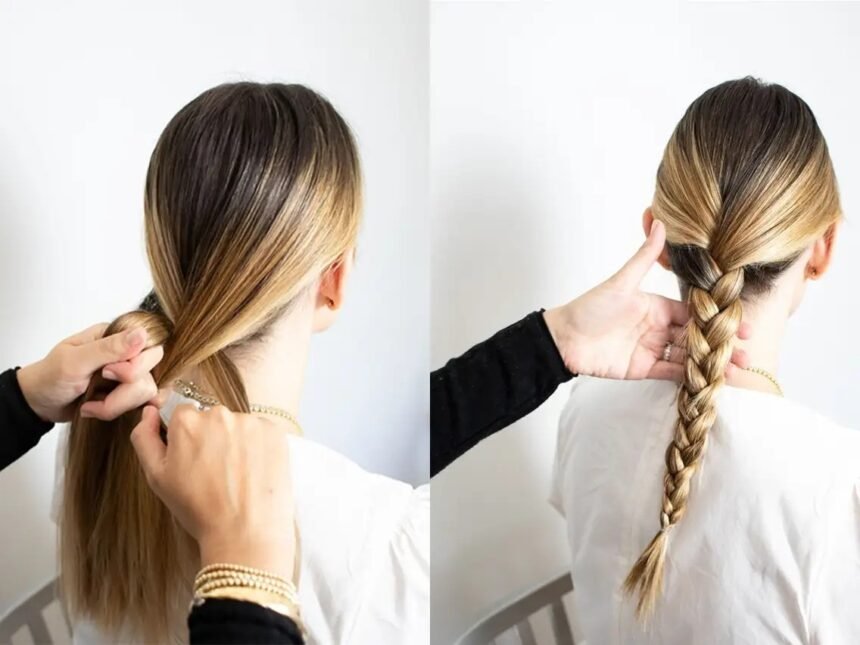Braiding is a timeless and versatile hair styling technique that has been embraced by cultures around the world for centuries. Not only does it offer a practical way to manage and protect your hair, but it also provides an avenue for creative expression through an array of intricate designs and styles. Whether you’re a beginner looking to master the basics or someone more experienced aiming to expand your repertoire, this comprehensive guide will walk you through the essential steps and tips on how to braid hair, ensuring you can achieve beautiful, lasting braids.
Understanding the Basics of Hair Braiding
Before diving into the various braiding techniques, it’s crucial to grasp the fundamentals that apply to all types of braids. Good braiding starts with well-prepared hair; it should be clean, detangled, and, depending on the style you’re aiming for, possibly slightly damp or pre-treated with a styling product to enhance texture and hold. Divide your hair into manageable sections, and practice the basic movements of crossing strands over one another, which is the foundation of nearly all braiding styles.
The Classic Three-Strand Braid
The three-strand braid is where most beginners should start their braiding journey. It’s the simplest form of braiding and serves as the building block for more complex techniques. Begin by dividing the hair into three equal sections. Cross the right strand over the middle one, then the left strand over the new middle strand, and continue this pattern until you reach the end of your hair. Secure the braid with a hair tie, and voila, you’ve completed a classic braid. This technique can be adapted into numerous styles, from a single braid down the back to side braids or even multiple small braids throughout the hair.
The French Braid: A Step Up in Complexity
Once you’re comfortable with the basic three-strand braid, the French braid is a natural next step. This technique involves gradually adding small sections of hair to each strand as you braid, creating a woven effect that sits flush against the head. Starting at the crown, divide a small section of hair into three strands. As you cross each strand over the middle, gently incorporate a small section of free hair from the same side of the head into the strand before it crosses over. Continue this pattern, adding more hair with each crossover, until all the hair is incorporated into the braid, and then finish with a traditional three-strand braid. The French braid is elegant and practical, keeping hair secure and out of the face, making it ideal for both casual and formal occasions.
Exploring the Dutch Braid
The Dutch braid, often referred to as the “reverse French braid,” involves a similar technique to the French braid but with one key difference: instead of crossing the strands over each other, you cross them underneath. This small change creates a braid that appears to sit on top of the hair, giving it a more pronounced, 3D effect. The Dutch braid is particularly popular for its standout appearance and is the basis for many trendy hairstyles, including the “boxer braid” look.
The Fishtail Braid: Intricate Yet Simple
The fishtail braid might look intricate, but it’s surprisingly easy to achieve. It requires only two sections of hair instead of three. To create a fishtail braid, divide your hair into two large sections. Take a small strand of hair from the outer edge of one section and cross it over to the inside of the opposite section. Repeat this process on the other side, continuing to alternate sides and pulling small sections from the outside to the inside of the opposite section. The key to a beautiful fishtail braid is maintaining even tension and using smaller sections for a more detailed braid.
Tips for Perfecting Your Braiding Technique
- Practice on damp hair: Slightly damp hair is often easier to manage and braid, as it reduces flyaways and helps the braid hold its shape.
- Use the right products: Applying a small amount of mousse or styling cream to your hair before braiding can provide extra grip and make the braiding process smoother.
- Maintain even tension: Keeping a consistent tension on the strands as you braid ensures that the braid is uniform and doesn’t unravel.
- Secure your braids properly: Use hair ties that are sturdy but gentle on your hair to avoid breakage. Clear elastic bands are great for the ends of braids as they are less noticeable.
- Practice, practice, practice: Like any skill, becoming proficient at braiding takes practice. Don’t be discouraged by initial difficulties; keep practicing, and you’ll see improvement.
Creative Variations and Advanced Styles
Once you’ve mastered the basic braids, you can experiment with more complex and creative variations. For example, the waterfall braid adds a whimsical, flowing element to the hair, while the crown braid wraps around the head for a regal look. Mixing different braid types in one hairstyle or incorporating accessories like ribbons or flowers can also add a unique touch to your braids.
Conclusion
Braiding is an art form that allows for endless creativity and personal expression through hair. Starting with the basic techniques and advancing to more complex styles, anyone can learn to create beautiful braids with practice and patience. Whether you’re aiming for a simple, practical braid for everyday wear or an elaborate style for a special occasion, the skills you develop will enable you to transform your or someone else’s hair into a work of art. Remember, the key to great braiding lies not just in the technique but also in the care and preparation of the hair, as well as the patience and precision with which you braid. With these tips and techniques, you’re well on your way to becoming a proficient braider, capable of crafting stunning, intricate braids that turn heads and express your unique style.







